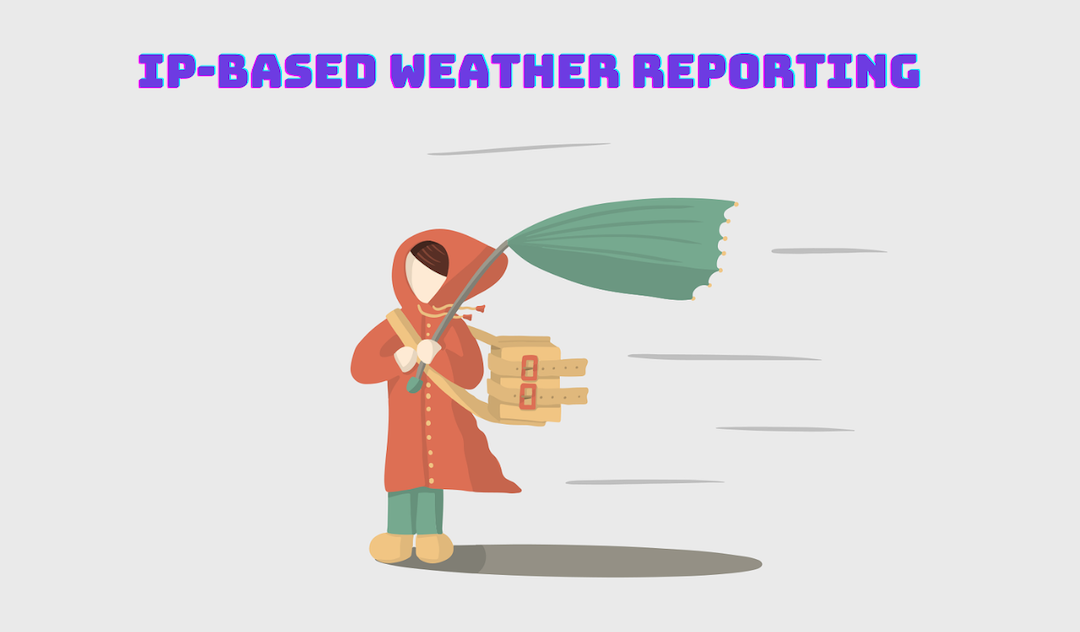
Welcome to the era of IP-based weather reporting, where innovative technologies are reshaping the way we predict and understand weather patterns. In this age, even the skies above yield real-time data as digital connectivity ensures information flows at lightning speed. This article immerses in the captivating world of IP-based weather reporting. It explores its advantages, challenges, and underscores the extraordinary influence it wields over meteorology.
Understanding IP-Based Weather Reporting
Harnessing the power of Internet Protocol (IP), IP-based weather reporting actively collects, analyzes, and disseminates weather data. Traditionally, ground-based stations, satellites and weather balloons were heavily relied upon in weather forecasting methods. However, despite offering valuable insights, these approaches frequently grappled with limitations in coverage accuracy and timeliness.
IP-based weather reporting actively harnesses an extensive network of interconnected devices–smartphones, IoT sensors, drones and automobiles amongst others–to actively collect real-time weather data. Meteorologists can now tap into this previously unexplored wealth of information by accessing existing infrastructure and consumer technologies; thereby circumventing limitations imposed by traditional methods on their quest for comprehensive meteorological insights.
Benefits of IP-Based Weather Reporting
One key advantage of IP-based weather reporting is its capacity to furnish granular, hyper-localized data. Indeed, this approach circumvents the need for reliance on broad regional forecasts. By shifting their analysis from a macroscopic perspective down to the neighborhood level–meteorologists enhance accuracy and precision in their delivery: an unprecedented feat in forecasting.
IP-based reporting liberates weather updates from their traditional confinement to scheduled broadcasts or periodic forecasts. Instead, it enables users to receive these real-time updates directly on their smartphones, tablets or other connected devices – thus empowering them with the latest information for making informed decisions.
Through the integration of data from various sources such as social media and traffic cameras, and powerful APIs like Tomorrow API, IP-based weather reporting leverages a pool of information to boost the accuracy of forecasts. Advanced algorithms scrutinize this wealth of data: they identify patterns, even trends that traditional forecasting methods could potentially miss.
Timely and accurate weather information proves critical for disaster preparedness and public safety. With the aid of IP-based reporting, authorities can issue targeted alerts- a strategic approach that enables communities to enhance their preparation against severe weather events like hurricanes, tornadoes or flash floods.
Challenges and Considerations
Despite its many benefits, IP-based weather reporting also poses challenges:
- Data Quality: The sheer volume of data that IP-based reporting generates may present quality control and data management challenges. Thus, we must carefully ensure its accuracy and reliability.
- Algorithmic Bias: Any data-driven system, including IP-based weather reporting, is vulnerable to algorithmic bias. To ensure fairness and equity in weather forecasting—a task necessitating continual evaluation and mitigation of biases—we must critically assess our methods for data collection as well as their subsequent analysis.
- Privacy and Security: Collecting data from consumer devices —a ubiquitous practice in our digital age— poses significant privacy and security concerns. Thus, striking an optimal balance between this necessary data collection is crucial. To maintain public trust and ensure compliance with stringent data regulations, prioritizing robust protection of individual privacy becomes imperative at all times.
- Connectivity and Infrastructure: IP-based reporting places a substantial reliance on connectivity and infrastructure. Real-time weather data accessibility may present challenges in areas that are either remote or underserved, exhibiting limited internet access.
Case Study: Waze and Traffic-Weather Integration
Utilizing real-time traffic data provided by its users, the crowd-sourced navigation app Waze has revolutionized urban navigation. However, accurately predicting weather's impact on traffic patterns has perpetually posed a challenge for its navigation systems. In response to this issue, Waze integrates weather data into its platform- a strategic move that enables users to receive timely updates on road conditions related to current weather situations.
Leveraging IP-based weather reporting, Waze taps into an extensive array of weather data sources. These include not only weather stations but also meteorological agencies and user-generated reports. This wealth of information allows Waze to anticipate—and subsequently mitigate—traffic disruptions. Thus, adverse conditions such as heavy rain, snow or fog which are no longer a challenge.
For instance, if heavy rain is forecasted, Waze may give drivers alerts of potential hazards such as flooding, reduced visibility or slippery road surfaces in specific areas. They can, accordingly, choose routes and adjust travel times thanks to this awareness, hence avoiding risky and overcrowded paths- this eventually leads to a great improvement in travel safety.
The fact that Waze shows weather data along with traffic conditions not only warns users about possible weather disruptions but also reveals a greater level of road safety and proficiency. It accommodates weather data in real-time for alternative routes panning and travel plan creation. It requires the development of an efficient way of navigation for the users and minimizing their travel time, which is a very good practice.
Besides traffic data, the Waze platform interlinks weather data, which shows IP-based weather reporting transforming power while navigating systems. Thus, navigation systems attain greater accuracy and reliability. Ultimately, such upgrading contributes to enjoyment for millions of worldwide customers and gives a new driving dimension.
Conclusion
Technological advancement has brought about a paradigm shift in forecast reporting by placing interconnected devices and complex algorithms at the center as forecasters uncover more knowledge about weather patterns and events. Certainly, they have created a system that can quickly and precisely make forecasts that are specific to a region. Given this IP-based paradigm, public safety can be managed in a much more sophisticated way; which is the case of disaster prevention and resource management. This will mark a new stage in the development of improved predictability of weather phenomena as technologies continue to advance.
Share this post
Leave a comment
All comments are moderated. Spammy and bot submitted comments are deleted. Please submit the comments that are helpful to others, and we'll approve your comments. A comment that includes outbound link will only be approved if the content is relevant to the topic, and has some value to our readers.

Comments (0)
No comment